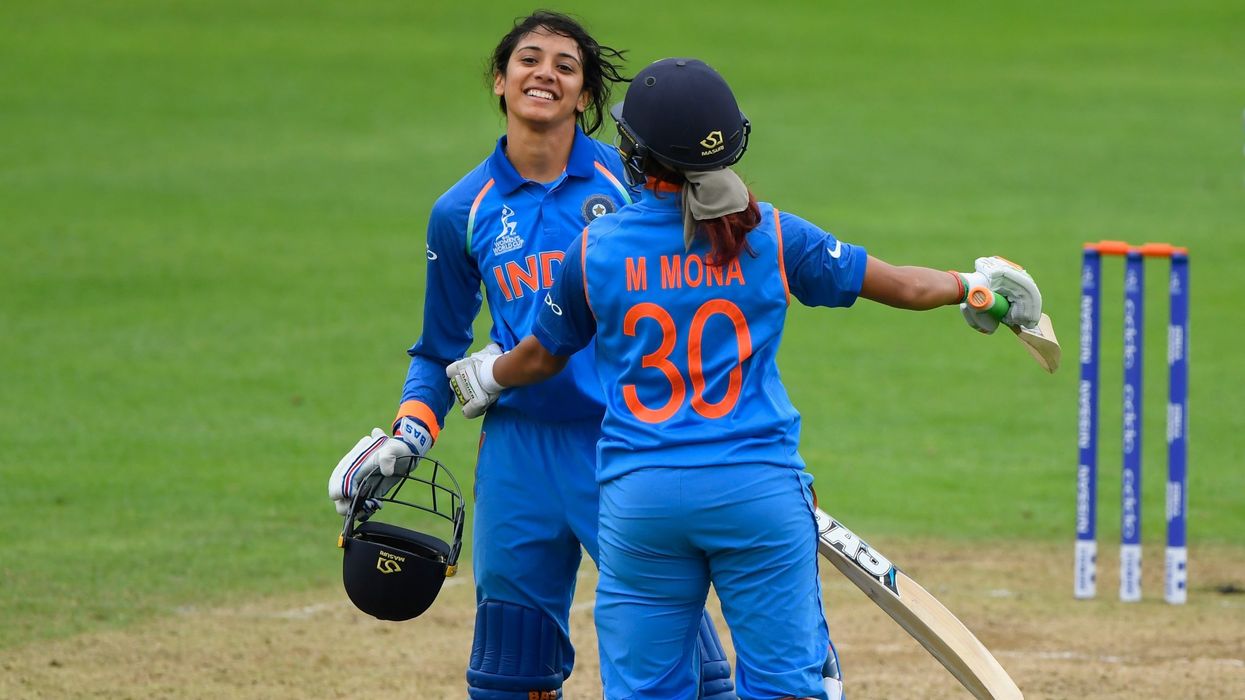Smriti Mandhana stole the thunder in India’s inaugural Women's Premier League (WPL) auctions in Mumbai on Monday (13).
Royal Challengers Bangalore (RCB) pipped Mumbai Indians in a bidding war to buy the India vice-captain for Rs 34 million (£339,759).
India skipper Harmanpreet Kaur came much cheaper for Mumbai Indians at nearly half the price of Mandhana at Rs 18m (£179,872).
Harman is also not the highest paid in her team where England's Nat Sciver-Brunt got way more at Rs 32m (£319,773).
Harmanpreet was not even among the top-four Indian buys as the second costliest player from the country so far is all-rounder Deepti Sharma, who was bought by UP Warriorz for Rs 26m (£259,816).
The hard-hitting Shafali Verma and star of the World T20 game against Pakistan on Sunday (12), Jemimah Rodrigues, were picked by Delhi Capitals (DC) for Rs 20m (£199,858) and Rs 22m (£219,844) respectively.
However, DC pulled off a coup by roping in one of contemporary women's cricket's best leaders Meg Lanning of Australia for Rs 11m (£109,922).
RCB, which teed off the buying spree, also explained their choices and the prices attached to them.
"Everyone knows Mandhana and (Australia's Elysse) Perry; we were pretty committed to the couple of people we wanted to get. We're very happy to get such quality players. It's a dream result for us to get Mandhana, Perry and (Sophie) Devine," RCB director of cricket Mike Hesson said during a media interaction.
"Smriti has got plenty of captaincy experience and is familiar with the Indian conditions, so highly likely (she'll be the captain)."
Mandhana, who watched the auction with her team cheering each bid, was ecstatic.
"We have been watching the auction in men's (cricket). It is such a big moment for women to have an auction of this sort... RCB's legacy is big, they have built a big fan base. Hope we both can together build a big team," Mandhana said.
One of the prominent picks during the first round of auction was Australia's off-spin all-rounder Ashleigh Gardner, who was bought by the Gautam Adani-owned Gujarat Giants for Rs 32m (£319,773).
Gardner and Nat Sciver are the two highest-paid overseas players.
Star Australian all-rounder Perry received a cool Rs 17m (£169,879) winning bid from RCB, who also got New Zealand skipper Devine dirt cheap at a base price of Rs 5m £49,964).
RCB has already exhausted Rs 71m (£709,497) out of the Rs 120m (£1.2m) purse on four players and they need to get another 11 players with the remaining Rs 49m (£489,653) to have a mandatory squad size of 15 players.
The maximum squad strength is 18 players.
UP Warriorz also got England left-arm spinner Sophie Ecclestone on board for Rs 18m (£179,872). (PTI)













